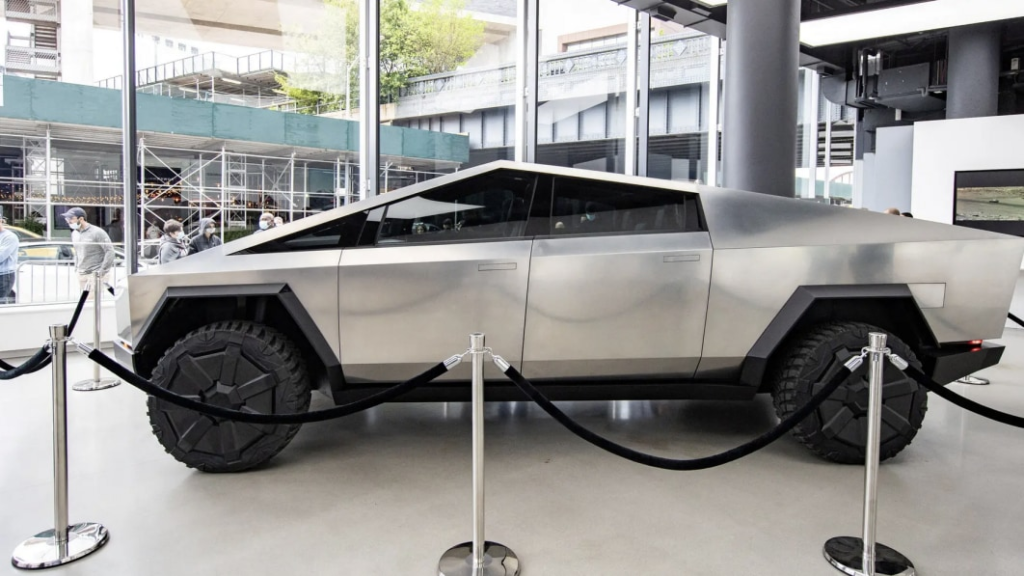Why the Tesla Cybertruck is years behind schedule

Elon Musk’s concept of an all-electric, stainless steel truck is one that you might say belongs … well, back to the future.
Taking a cue from that movie’s biggest star — John DeLorean’s extreme vision of a stainless-steel-bodied sports car — Musk three-plus years ago shocked the industry when he announced that Tesla would build a “Cybertruck” that would accelerate faster than a 911 and look nothing like a Ford F-150. And it would be built of DeLorean-esque stainless steel.
The Musk plan, like many Musk plans, has yet to come to fruition. In a revealing essay in The New York Times, veteran auto writer Jack Ewing details the effort to produce the Cybertruck, with a focus on the use of stainless steel in an “exoskeleton” vehicle as “another example of Mr. Musk’s penchant for pushing technological boundaries to the brink of disaster.”
Ewing discusses with experts the challenges of working with the material — challenges, he writes, that may “help explain why Tesla is two years behind schedule in manufacturing the Cybertruck, which the company plans to produce at its factory in Austin, Texas.’’
The story quotes Raj Rajkumar, a professor of engineering at Carnegie Mellon University, on Musk’s go-my-own-way approach: “Tesla thinks they can solve any problem and don’t have to learn from anyone else. And then they get stuck in a corner.”
Meanwhile, Tesla’s been lapped by competitors whose electric trucks were announced later but went on sale sooner. Citing the high demand for EV trucks, Ewing notes, “Ford stopped taking reservations for its F-150 Lightning, a battery-powered version of the best-selling vehicle, because it can’t make the vehicles fast enough. Rivian, a newer electric vehicle company, is also struggling to produce enough of its pickup, the R1T, to meet demand.”
But it’s stainless steel that most intrigues him. Ewing explains that the cost of the material exceeds conventional steel “because it contains chromium and often other ingredients, like nickel and molybdenum, that are in high demand. Stainless steel’s tendency to spring back to its original shape means it cannot be stamped into fenders and other parts as easily as the more pliable steel used by most automakers. It also requires special welding techniques.” In other words, you can ignore Musk’s initial claim of a $40,000 truck; that’s not going to happen.
The story takes a dive into design and mass-production questions, noting the Cybertruck body “has none of the curves typical of most vehicles, instead consisting of flat steel panels that experts say are probably cut with lasers and then welded together, eliminating the need for powerful stamping machines.”
Ewing also speculates about safety. “The steel used in most cars is designed to crumple in a crash, absorbing energy and protecting passengers,” he writes. “Stainless steel does not crumple as easily, exposing passengers to more of the force from impact.”
Summing up, he writes, “If nothing else, the Cybertruck will stand out in a crowded field.” But when? It’s now looking like 2024 before the truck gets produced in any real numbers.
For a deeper dive into the difficulties bringing a stainless steel truck to market, check out the Times’ full report.
Related video:







